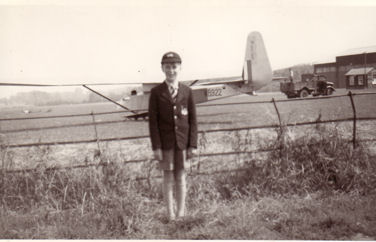This is the sixth part of a series of childhood memories of Trumpington in the 1940s and 1950s. For an introduction to the series, see Childhood Memories of Trumpington .
During the few months these stacks were standing in the yard, they became infested with mice and rats. The insulating properties of the straw gave them shelter as autumn turned to winter; and food – the grains of oats – were never more than a few inches away. It was a wonderful life for them while it lasted. If the threshing happened to coincide with school holidays, then us sons of the farm workers would turn up to watch, with stout sticks in hand. As the sheaves were transferred from stack to thresher, the stack got lower and lower and the mice and rats would keep moving down to stay hidden. But eventually they’d be down to only a layer or two of sheaves that were almost at ground level. This is when the “sport” would begin. As each remaining sheaf was lifted the exposed mice would make a dash for it across the yard to find a new place of refuge. It would start with the odd one or two, then threes and fours, and gradually increase to perhaps a dozen or more when each of the final few sheaves was eventually lifted. We lads would chase them, bashing them with our sticks until they were dead. The men left the mice to us; but if a rat emerged everybody chased it, the men sometimes using their pitchforks as spears. And with all those oats available to gorge on, they were some big old rats I can tell you. It may seem cruel and barbaric to town folk, but it was a lot quicker death than that of town mice and rats that suffer poisoning by pest control officers. By the way, I trust you worked out why the men secured the bottoms of their trouser legs?
Back at harvest time when we were combine-harvesting the wheat and barley out in the distant fields, I would ride on top of the bulk grain as it was brought back, by tractor and trailer, to a cathedral sized barn at Church Farm, opposite Anstey Way, where it was tipped into the grill-covered concrete pit to begin its journey up the elevator to the very top of a vast machine that dried the corn and removed all the unwanted weed seeds and insects before it was sent off on a series of conveyor belts to be poured into giant silos, each as high as a house, where it would be stored until sold, and some kept as seed corn for next year’s crop. Now no one thought to tell me that it was dangerous to play in these silos full of corn. And with all the noisy machinery no one would hear me calling for help, that’s for sure. The corn behaves rather like quicksand. You sink into it. And once you’re trapped, the more you struggle the more you sink in. There have been cases where men have died from suffocation as they’ve slowly but surely sunk beneath the surface. And of course, if you happen to be on your own, nobody knows where you’ve gone; until possibly months later when they go to empty the grain via the shutter at the bottom of the silo, and a mummified body works its way down and blocks the flow. Fortunately the size of my footprint, relative to the weight of my then skinny body, meant that I only sunk up to my shins; and once I’d worn myself out, wading through the grain, I escaped unscathed apart from having to take off my shoes to empty them.
Continue with the next part of Brian Goodliffe’s childhood memories of Trumpington in the 1940s and 1950s.

Brian Goodliffe, aged 11, summer 1955, after passing the 11-plus, wearing his uniform for Cambridge Central Grammar School. Photo: Goodliffe family.